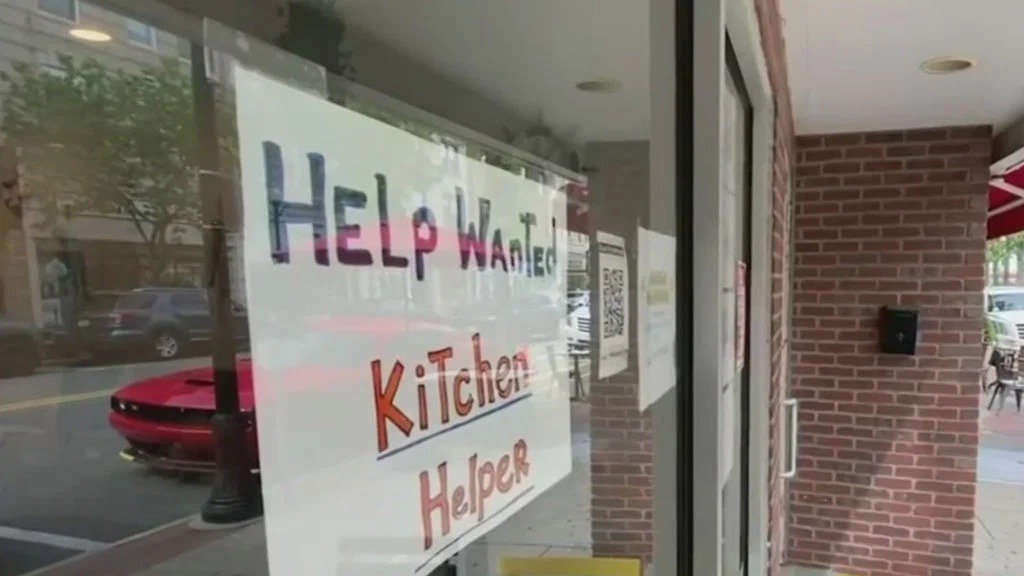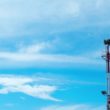Inflation is headline news for the first time in decades, and a battle is raging over whether rising prices threaten the U.S. economy. On one side are those fearing a return to 1970s double-digit inflation and advocating for slower economic growth. Combatants on the other side claim that economic growth should not be sacrificed on an altar of inflation fears.
Inflation is just a fancy name for changes in cost of the basket of goods and services purchased by an average household. A little inflation is generally welcomed. It helps middle-income families that have borrowed money. My parents repaid the mortgage they took out in 1961 with cheaper dollars thanks to inflation, allowing them to make additional purchases and fuel economic growth. This is one reason many central banks around the world set their annual inflation target at 2 percent.
High inflation, on the other hand, makes it difficult for incomes to keep up with rising prices and tends to reduce living standards. High inflation also hurts financial institutions, which get repaid with more dollars (due to interest) but dollars that are worth less than the dollars they lent out. In response to this, central banks typically raise interest rates, slowing economic growth.
Larry Summers fired the first shot in our current inflation war. A former treasury secretary and former president of Harvard, Summers is sly like a fox in economic debates. In two Washington Post columns earlier this year, he criticized President Biden’s Covid-19 relief bill as inflationary because it gave too much money to people who didn’t need it, and his $2 trillion infrastructure plan as inflationary because its spending levels were too high. Inflation fears have also been raised by some central bankers and promulgated by Republicans, who disdain government and promote inflation worries both to justify cutting government spending and to embarrass the Democratic president.
Recent economic data seems to support the inflation worriers. Consumer prices increased 0.8 percent in April (10 percent if continued on an annual basis), 0.6 percent in May, and 0.9 percent in June. From June 2020 to June 2021, prices rose by 5.4 percent, the highest annual inflation figure in over a decade. A Chicken Little reaction ensued—fears of the sky falling and a return to the double-digit inflation of the Carter years.
High inflation can stem either from surging production costs or too much spending. OPEC tripled oil prices in 1973 and then doubled them in 1979. The price of a barrel of oil soared from $22 in 1973 to $129 by 1980. This increased prices for many goods because oil-generated energy runs the factories that produce the goods and fuels the trucks that bring these goods to market. And the cost of waging the war in Vietnam had increased inflationary pressures from the spending side earlier that same decade.
Summers has focused on the demand side of the problem—huge government expenditures and massive consumer spending aided and abetted by government support to households in lockdown. But the supply side has become the hot political issue. Small-business owners are struggling to find employees. Many, Republicans in particular, blame the March 2021 American Rescue Plan, which provided $300 per week in extra unemployment benefits, for keeping people from taking jobs. Twenty-six states have stopped providing this benefit to their citizens—even though the federal government pays the entire cost and these benefits expire in early September.
Undoubtedly, a few people prefer collecting unemployment insurance to working right now. Nonetheless, high unemployment benefits are an unlikely explanation for why firms can’t find workers. Only 40 percent of the unemployed are receiving benefits. Of these, many are consultants or small-business owners, who won’t accept another job offer because they have a job, and the extra unemployment benefits were meant to help them survive during the Covid pandemic. Others (especially in the entertainment industry) were laid off because of Covid-19 and are waiting to return to these jobs.
In addition, two studies have compared states that ended extra unemployment benefits in June with states that did not. One was done by Arindrajit Dube of the University of Massachusetts at Amherst, and one was done by Gusto, a firm that processes company payrolls. While not peer reviewed, and while covering a period of only several weeks, both studies found little difference in job gains for these two different groups of states.
However, the labor shortage is real. We have lost more than 600,000 Americans to Covid-19, and non-Covid death rates were up substantially in 2020. At the same time, a bulge of retiring baby boomers is reducing the size of the labor force, as is declining labor force participation rates for adults between the ages of 25 and 54 (for many different reasons, including the lack of available childcare due to Covid-19). And immigration has plummeted. Overall, the U.S. economy is down around four million potential workers.
On the other side of the labor market, as President Biden noted in response to a question by a restaurateur at his July 21 town hall meeting in Cincinnati, the Payroll Protection Program enabled many small businesses to survive. Estimates range from a 15 percent to a 30 percent increase in the survival rate of small firms. As the U.S. economy recovers, these firms are now seeking workers because of the program. So there is extra demand for labor at the same time that there is reduced labor supply.
Given such a labor shortage, just posting a job ad or help wanted sign is not enough. Firms must raise wages. Because wages comprise such a large component of the cost of providing goods and services, large wage hikes tend to push up prices. However, while wages are rising for jobs that historically have paid poorly, wage increases are not the cause of rising prices now. The Federal Reserve Bank of Atlanta found that over the past year, wage increases have averaged 3.2 percent, a rate below the five-year average of 3.6 percent before Covid-19.
If large government spending and generous unemployment benefits are not responsible for labor shortages or wage hikes, why is inflation rising? The two main causes of rising inflation are supply-chain problems and temporary, Covid-related price changes. In the former case, price changes are trampoline-like—a quick rise, to be followed by a quick descent. In the latter case, price changes are like a yo-yo—they fall and then return to where they started. Both phenomena are operative now.
Over several decades, U.S. firms have adopted a technique pioneered by Toyota during the 1970s called “just-in-time inventory management.” Manufacturers don’t want large inventories of parts. These must be paid for, warehoused, and insured. The smaller their inventory, the better. Toyota organized production so parts arrived at their factories just as they were needed to assemble a car.
Under normal circumstances, just-in-time inventory management will reduce costs for sellers and decrease prices for consumers. In abnormal times, firms have no stock of parts to deal with unexpected demand or supply-chain changes.
Around half of April’s inflation came from rising car prices—a 0.5 percent rise in new car prices and a 10 percent rise in used car prices, the latter of which is responsible for 0.3 percentage points of the 0.8 percent April inflation rate. In June, used car prices rose at an annual rate of 10.5 percent, and car prices (used, new, rentals, and parts) were responsible for 60 percent of the monthly 0.9 percent increase in prices. Two events explain this—a drought in Taiwan (from the absence of typhoons in 2020) reduced the water supply available for plants making semiconductors, and there was a fire at an electronics plant in Japan making semiconductors. Without an inventory of chips, and without new chips being produced, cars can’t be manufactured. The result has been a shortage, and higher car prices.
Taiwan’s water supply may return to normal during its summer typhoon season. Renesas Electronics, the Japanese chipmaker, is starting to make semiconductors again. When its plant is fully operational, new cars will once more be produced in large quantity; new and used car prices will fall back to pre-pandemic levels, reducing inflation.
At the same time, some prices are rebounding from drops in 2020. While these price increases aren’t likely to be reversed in the future, they also won’t contribute to future inflation. Here’s one example. Last year, when people were not driving much, insurance companies cut premiums. I saved $200. My insurance rates are now back where they were two years ago, but still much higher than last year. I don’t expect another $200 premium increase next year. Similar changes are responsible for rising prices of oil and gasoline, air travel, and hotel rooms.
Summers is right that we must be vigilant when it comes to inflation. He is wrong, however, about inflation arising from too much demand. In moments of greater forethought, Summers himself recognized this. For many years, he raised concerns about a future with slow economic growth and high unemployment, conditions that are inconsistent with raging inflation.
On the supply side, weather-related problems due to climate change or other problems at manufacturing plants anywhere in the world could increase inflation. But these will be temporary blips, soon to be reversed. The only danger is a steady stream of short-run problems or accidents—a possibility, but a highly unlikely possibility.
The more serious problem concerns wages. Since the 1970s, worker productivity has risen 2 percent per year, but wages have barely kept pace with inflation. For more than 40 years, workers received little extra spending power for being more productive employees. Instead, profits and inequality rose. Additionally, the U.S. economy is still down 6.8 million jobs (as of June 2021) from before Covid-19. The real danger we face comes not from inflation but from misguided inflation fears that keep us from using economic policies to spur job and wage growth.
Most people are familiar with the Chicken Little tale. Few remember how it ends. Actually, it has two endings. In the happy ending, Chicken Little develops courage in the face of adversity and no longer fears a cataclysmic end to the world. In the more ominous ending, Foxy Loxy cooks and eats Chicken Little after promising him protection from the disaster. In both versions, the moral is: Don’t get hysterical and believe that an extremely unlikely worst-case scenario is imminent. This is a good lesson for the summer of Summers, as the U.S. economy struggles to return to normal. For many reasons, the current inflation surge is likely to be short-lived. The sky is not falling.
Steven Pressman is professor emeritus of economics and finance at Monmouth University and author of Fifty Major Economists, 3rd edition (Routledge, 2013).





0 Comments